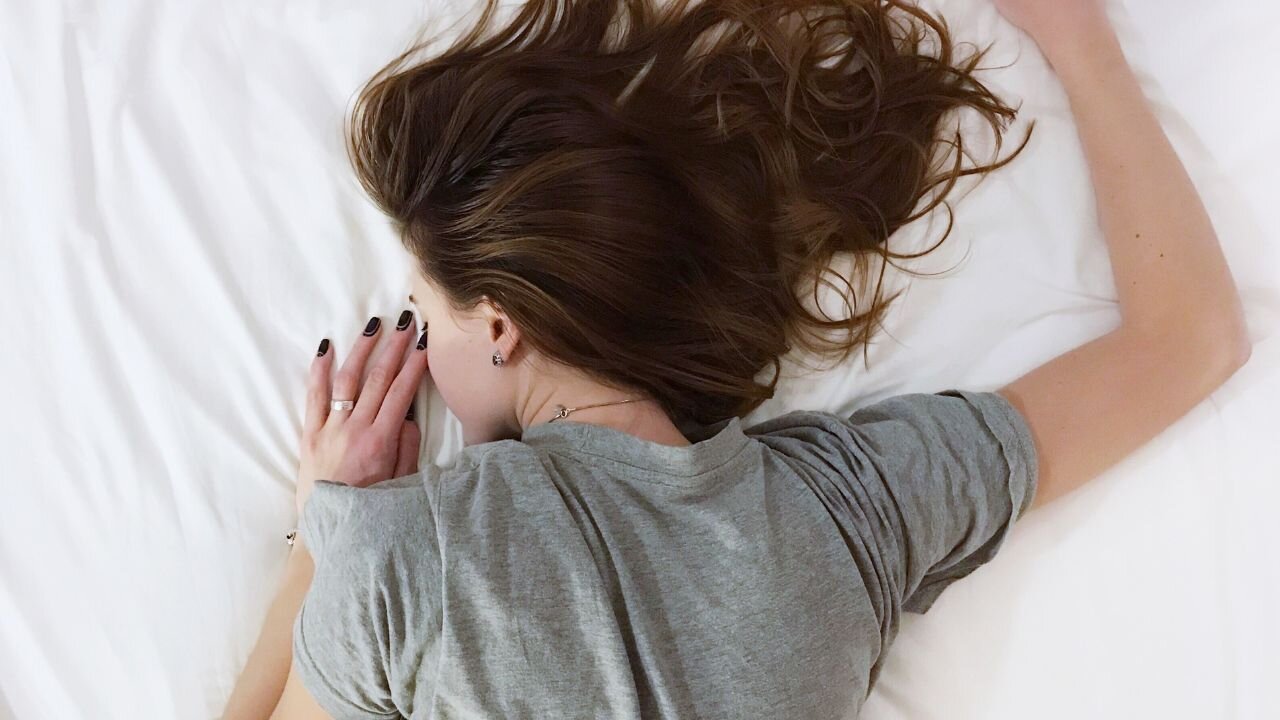Premium Only Content

2 in 3 consider themselves anxious sleepers
Do you sleep on your back, side, or stomach? For one in five Americans, it’s all of the above.
That’s according to a new survey of 2,000 respondents, conducted ahead of World Sleep Day, which found that 22% of those polled switch up their sleeping position every single night.
Not surprisingly, two out of three (64%) identified themselves as restless sleepers, citing anxiety (26%) and snoring partners (20%) as the biggest catalysts of their tossing and turning.
And that tossing and turning seems to have consequences – only one in ten (10%) said they feel refreshed every single time they wake up in the morning.
Conducted by OnePoll on behalf of Purple Innovation, the data also suggests that the majority of Americans (42%) prefer to sleep on their side, almost twice as many as those who called back-sleeping (18%) or stomach-sleeping (17%) their favorite position.
However, that proved less true for millennial respondents (ages 26-42), who were most likely to sleep on their stomachs (19%) and least likely to sleep on their sides (38%).
Interestingly, Millennials were most likely to change their sleeping position to accommodate neck pain (38%) – but also the most likely to report their sleep quality as “good" (73%) compared to the panel as a whole (66%).
Regardless of demographics, pain ended up being a big sticking point for most respondents. Over half (53%) have attempted to deliberately change their sleeping position, most frequently to ease soreness (28%) or improve their quality of sleep (28%).
Out of those polled who’ve experienced soreness, back pain (36%) emerged as the most common complaint, followed by neck pain (33%) and shoulder pain (24%).
“We know from research that a good night’s sleep becomes essential to break the cycle of pain and that there is an unquestionable link between sleep and pain,” said Dr. Meeta Singh, a board-certified psychiatrist and sleep medicine specialist at the Henry Ford Hospital.
“Short sleep times, fragmented sleep, and poor sleep quality often causes heightened sensitivity to pain. As such, prioritizing sleep becomes an important step in managing pain. Additionally, people with pain learn to sleep in different positions that are comfortable to reduce the pain, so a mattress that cushions the pressure points and supports the spine, can be life-changing.”
According to the poll, most respondents indicated a tendency to end up with their arms outstretched while sleeping.
Forty-seven percent reported sleeping in the “yearner” position – on their side, with their arms out – while 40% ended up on their stomach in the “freefaller” position.
Thirty-nine percent also found themselves in the “soldier” position, which involves sleeping on your back with your arms at your sides.
Indeed, 69% even admitted to positioning their body “in whatever shape I need to fall asleep,” no matter how sore they feel in the morning.
“It’s clear that the majority of Americans aren’t getting the deep sleep they need,” said Jeff Hutchings, Chief Innovation Officer at Purple. “People deserve a mattress that can balance temperature, respond instantly to movement, support the back and simultaneously cushion pressure points, all essential to a deeper, more rejuvenating sleep, no matter how you sleep.”
MOST POPULAR MATTRESS SIZES
- Full XL (54” x 80”) - 24%
- Full (54” x 75”) - 23%
- Queen (60” x 80”) - 19%
- King (76” x 80”) - 14%
- Twin XL (38” by 80”) - 8%
- California King (72” x 84”) - 4%
- Twin (38” x 84”) - 4%
Survey methodology:
This random double-opt-in survey of 2011 general population Americans was commissioned by Purple Innovation between Feb. 3 and Feb. 6, 2023. It was conducted by market research company OnePoll, whose team members are members of the Market Research Society and have corporate membership to the American Association for Public Opinion Research (AAPOR) and the European Society for Opinion and Marketing Research (ESOMAR).
-
 0:52
0:52
SWNS
10 days agoHow much of your paycheck do you spend after receiving it?
78 -
 2:23:54
2:23:54
DLDAfterDark
6 hours ago $0.06 earnedGun Talk LIVE! Thursday At The Armory! Feat. Josh of BDG&G & DLD
18.3K2 -
 2:50:16
2:50:16
TimcastIRL
6 hours agoSupreme Court May OVERTURN Gay Marriage, SCOTUS Hearing Set For TOMORROW | Timcast IRL
221K120 -
 4:06:47
4:06:47
Barry Cunningham
8 hours agoBREAKING NEWS: PRESIDENT TRUMP HOSTS A STATE DINNER | FOX NATION PATRIOT AWARDS!
101K65 -
 4:04:59
4:04:59
Alex Zedra
5 hours agoLIVE! New Game | The See Us
29.1K1 -
 1:56:30
1:56:30
ThisIsDeLaCruz
5 hours ago $0.05 earnedOn The Road With Pantera
31.8K3 -
 LIVE
LIVE
meleegames
5 hours agoMelee Madness Podcast #58 - They Changed What ‘It’ Was & It’ll Happen to You
118 watching -
 2:32:46
2:32:46
megimu32
6 hours agoOn The Subject: Why K-Pop Demon Hunters Feels Like 90s Disney Again
30.1K9 -
 1:38:28
1:38:28
Glenn Greenwald
9 hours agoThe Fraudulent GOP War Against Tucker and Nick Fuentes; Dick Cheney: Hero of the Resistance; Lindsey Graham's Deranged RJC Comments | SYSTEM UPDATE #544
108K116 -
 LIVE
LIVE
ThePope_Live
5 hours agoRedsack with the boys Cheap, Jah and Nova!
875 watching